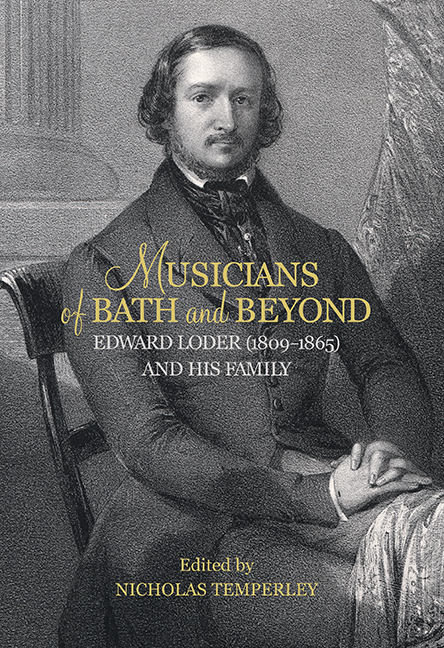Book contents
- Frontmatter
- Contents
- List of Illustrations
- Acknowledgments
- Notes on Contributors
- The Loder Family Tree
- Abbreviations
- Introduction
- PART ONE The Musical Profession in Early Nineteenth-Century England
- PART TWO The Loder Family
- PART THREE The Music of Edward Loder
- EPILOGUE The 1966 Revival of Raymond and Agnes
- Select Bibliography
- Index of Edward Loder’s compositions
- General Index
- Miscellaneous Endmatter
3 - The Theatre Royal, Manchester, in Edward Loder’s Time
Published online by Cambridge University Press: 04 June 2021
- Frontmatter
- Contents
- List of Illustrations
- Acknowledgments
- Notes on Contributors
- The Loder Family Tree
- Abbreviations
- Introduction
- PART ONE The Musical Profession in Early Nineteenth-Century England
- PART TWO The Loder Family
- PART THREE The Music of Edward Loder
- EPILOGUE The 1966 Revival of Raymond and Agnes
- Select Bibliography
- Index of Edward Loder’s compositions
- General Index
- Miscellaneous Endmatter
Summary
LONG before Edward Loder (1809–65) arrived in Manchester in 1851 in the capacity of musical director at the Theatre Royal, the city had an excellent reputation for its opera productions. There had been several notable seasons and performers in the theatre's three incarnations. The first Theatre Royal, in Spring Gardens, opened in 1775. Among other works, Thomas Arne's Love in a Village was given there in 1793, with Michael Kelly and his mistress, Anna Maria Crouch, taking the principal parts. The theatre burnt down in 1789 and was rebuilt in the following year, but the company disbanded in 1807. The building then became known as the Minor Theatre and, much later, in 1831, as the Queen's Theatre.
The New Theatre Royal was opened on 12 June 1807 in Fountain Street under the management of William Macready. From 1808 playbills described it as the Theatre Royal, jettisoning the ‘New’ prefix. Robert William Elliston from Drury Lane took over the lease in 1809 but failed financially, lasting only one year. A Mr Ward, who had previously held the lease of the first Theatre Royal, decided to try his luck in Manchester once more, reopening the theatre in 1810 in conjunction with the managers of the Liverpool Theatre. After four years the theatre was considered too large, so the gallery and boxes were reduced. Ward remained there until at least 26 March 1821 and was succeeded by Robert Clarke. Clarke remained until 1842, when John Knowles (1811–80), a wealthy local businessman, became proprietor; he was one of the most important figures in Manchester's theatrical history. There was a huge conflagration on 7 May 1844 when the theatre was razed to the ground. During its time it had been the venue for stage works, operas, and concerts, including performers such as Sarah Siddons, Angelica Catalani, Giuditta Pasta and Franz Liszt.
Following the destruction of the theatre, Knowles wasted no time in buying a plot of land on Peter Street and organising the construction of a new building. This was a prime location in close proximity to several important buildings, including the Athenaeum, the Mechanics’ Institute, the Concert Hall, and the Free Trade Hall. No expense was spared in making the third Theatre Royal the most sumptuous and impressive place of entertainment in the city.
- Type
- Chapter
- Information
- Publisher: Boydell & BrewerPrint publication year: 2016

